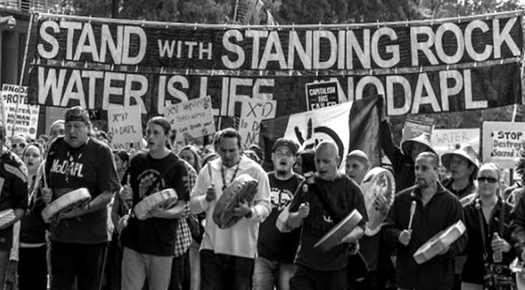
Native American and other religious leaders and activists fighting to stop the Dakota Access Pipeline in North Dakota welcomed new developments after the Army said on Sunday that it will not approve an easement. The Dakota Access Pipeline is a 1,172-mile-long (1,886 km) underground oil pipeline project in the United States. The pipeline is currently under construction by Dakota Access, LLC, a subsidiary of Energy Transfer Partners, L.P. On November 26, 2016, the project was reported to be 87% completed. Greenpeace and a group of more than 160 scientists dedicated to conservation and preservation of threatened natural resources and endangered species have spoken out against the pipeline. Conservation groups worry about safety and the impacts on air, water, wildlife and farming, because, they say, "pipelines break". The pipeline is designed to move oil from the fields of North Dakota to Illinois. The original path of the pipeline ran next to Bismarck, the North Dakota capital, but it was rerouted because of concerns over potential contamination of water supplies.
The Army Corps of Engineers said Sunday that it will not approve an easement necessary to permit the controversial Dakota Access Pipeline to cross under Lake Oahe in North Dakota. It is a monumental victory for the Native American tribes and thousands of others who have flocked in recent months to protest the oil pipeline.
The pipeline runs within a half-mile of the Standing Rock Sioux Reservation, and the tribe’s leaders argue that it threatens the drinking water for local Native Americans. Beside the drinking water, there is also a religious issue. Stephen Pevar, an attorney for The American Civil Liberties Union (ACLU), said that religion is very land-based among Native tribes. Native Americans have a bond to the land and nearly every tribe has its own sacred lands.
In this case, both religious and environmental aspects are included. Protesters state that the pipeline violates the National Historic Preservation Act according to which agencies should “consult with any Indian tribe … that attaches religious and cultural significance to properties with the area of potential effects.” The second support point is the American Indian Religious Freedom Act of 1978, which requires the federal government to “protect and preserve for American Indians their inherent right of freedom to believe, express, and exercise [their] traditional religions … including but not limited to access to sites, use and possession of sacred objects, and the freedom to worship through ceremonials and traditional rites.”
The demonstrations have attracted attention from mostly mainline Protestant denominations, though some see Pope Francis, who has written an encyclical on the environment and spirituality, as a natural ally. Representatives from the Presbyterian Church (USA), United Church of Christ and the Episcopal Church have visited the Standing Rock camp or expressed solidarity with the protesters, according to Religion News Service.
The victory for the Standing Rock Sioux and its allies could be short-lived because president-elect Donald Trump has vowed to support pipelines such as this one. Energy Transfer Partners, the developer of the Dakota Access Pipeline, says it will create thousands of construction jobs and millions in tax revenue.
Photo Credits: Truthdig
